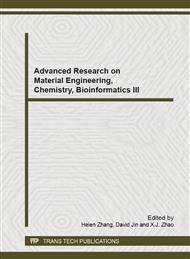p.426
p.431
p.435
p.439
p.444
p.448
p.455
p.459
p.463
Numerical Simulation of Pressurization Scheme of Gas Well in Jingbian Gas Field
Abstract:
With the exploitation of Jingbian Gas Field for decades, the formation energy gradually decreasing, and the wellhead pressure of some gas wells were found approaching to the pressure of gathering pipe network. Furthermore, some wellhead pressure can not make the produced natural gas get into the gathering pipe network. S well block of Jingbian Gas Field was set as the research object, applied numerical simulation method to create a new three dimensional geological model for gas reservoir of S well block, and then matched the reserves of gas reservoir and productivity parameters of gas well; applied the orthogonal test method design a variety of charging scheme and simulated every scheme; finally, decided an applicative pressurization scheme for gas well of S well block in Jingbian Gas Field.
Info:
Periodical:
Pages:
444-447
Citation:
Online since:
October 2013
Authors:
Price:
Сopyright:
© 2014 Trans Tech Publications Ltd. All Rights Reserved
Share:
Citation:


